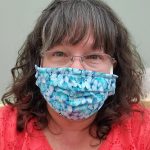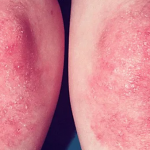Welcome back! Last week we talked about the horrible ice storm in Oregon. If you missed that blog and would like to catch up, click HERE.

This week, we resume our series on rare diseases, disorders, and syndromes. Someone recently asked me what the difference is between these three terms, and I didn’t know. I decided to look them up and share that with you this week.
A Disease is classified as any harmful deviation from the normal structural or functional state of an organism, generally associated with certain signs and symptoms and differing in nature from physical injury. A diseased organism commonly exhibits signs or symptoms indicative of its abnormal state.
A Disorder is classified as an irregularity, disturbance, or interruption of normal functions.
A Syndrome is classified as a group of symptoms that consistently occur together, or a condition characterized by a set of associated symptoms.
So to sum that up Disease vs Disorder vs Syndrome = A disease is a pathophysiological response to internal or external factors. A disorder is a disruption to regular bodily structure and function. A syndrome is a collection of signs and symptoms associated with a specific health-related cause.
Okay, now that we’ve solved that problem, let’s move on to our rare disease this week, shall we?
I received a very nice email from a dear reader this week, who told me a story about her child who was diagnosed with Dermatomyositis. Dermatomyositis is a rare inflammatory disease. In telling me her story, I was struck by one thing: a wonderful outcome. She said, “Our son received excellent care and, by age 18, was deemed disease-free. He has scars and large knots in his fingers, but he’s otherwise healthy, a dad, a musician, a teacher, and still an awesome kid. He went through so much, but we all came out stronger, more empathetic, and aware of others in need“.
This is a story of hope. So if you, or someone you love, carry this diagnosis, hold on because there is hope. Please hear that first.
Now, let’s dig into this disease. We know it’s inflammatory in nature, but what are the symptoms? How would I know if my child had this disease?
SYMPTOMS:

Common symptoms of dermatomyositis include a distinctive skin rash, muscle weakness, and inflammatory myopathy, or inflamed muscles. It’s one of only three known inflammatory myopathies. Dermatomyositis can affect both adults and children. There’s no cure for this condition, but symptoms can be managed.
According to Healthline:
In most cases, the first symptom is a distinctive skin rash on the face, eyelids, chest, nail cuticle areas, knuckles, knees or elbows. The rash is patchy and usually a bluish-purple color.
You may also have muscle weakness that gets worse over weeks or months. This muscle weakness usually starts in your neck, arms, or hips and can be felt on both sides of your body.
Other symptoms you might experience are:
- muscle pain
- muscle tenderness
- problems swallowing
- lung problems
- hard calcium deposits underneath the skin, which is mostly seen in children
- fatigue
- unintentional weight loss
- fever
There is a subtype of dermatomyositis that includes the rash but not muscle weakness. This is known as amyopathic dermatomyositis.
CAUSES:
The exact cause of dermatomyositis isn’t known, but it has many similarities to an autoimmune disease. An autoimmune disease occurs when your body’s disease-fighting cells, called antibodies, attack your healthy cells. Having a compromised immune system may also contribute to getting the disease. For example, having a viral infection or cancer may compromise your immune system and lead to the development of dermatomyositis.
WHO CAN GET THIS DISEASE?
According to the Mayo Clinic, it’s most common in adults between the ages of 40 and 60 and children between the ages of 5 and 15. The disease affects women more often than men.
HOW IS IT DIAGNOSED?
Your doctor may order:
- an MRI to look for abnormal muscles
- an electromyography (EMG) to record electrical impulses that control your muscles
- a blood analysis to check your levels of muscle enzymes and autoantibodies, which are antibodies that attack normal cells
- a muscle biopsy to look for inflammation and other problems associated with the disease in a sample of muscle tissue
- a skin biopsy to look for changes caused by the disease in a skin sample
TREATMENT?
Treatment can involve prescription drugs such as Prednisone.
While effective, Corticosteroids, especially in high doses, shouldn’t be used for extended periods of time because of their potential side effects. Your doctor will most likely start you on a high dose and then gradually lower it. Some people can eventually stop taking corticosteroids completely if their symptoms go away and stay away after stopping the medication.
If corticosteroids alone don’t improve your symptoms, your doctor might prescribe other medications to suppress your immune system.
Corticosteroid-sparing medications are used to reduce the side effects of corticosteroids. Drugs such as azathioprine and methotrexate may be used if your case is advanced or if you have any complications from corticosteroids. Drugs like methotrexate are referred to as “DMARDS” (Disease Modifying Anti-Rheumatic Drugs). If this drug fails to relieve symptoms, there are a “next generation” of drugs called “Biologics” that can also be prescribed.
If you have dermatomyositis, your body is producing antibodies that target your skin and muscles. Intravenous immunoglobulin (IVIG) uses healthy antibodies to block these antibodies. IVIG consists of a mixture of antibodies that have been collected from thousands of healthy people who have donated their blood. These antibodies are given to you through an IV.
Your doctor might suggest additional treatments, such as:
- physical therapy that improves and preserves your muscle strength, along with preventing loss of muscle tissue
- an antimalarial medication, hydroxychloroquine, for a persistent rash
- surgery to remove calcium deposits
- medications to help with pain
COMPLICATIONS:
The list of possible complications can sound pretty scary. This is the part where I remind you of the positive outcome posted at the beginning of this blog. Never give up hope for a better tomorrow. Now let’s peruse those POSSIBLE complications:
The muscle weakness and skin problems linked with dermatomyositis can cause a number of problems. Some common complications are:
- skin ulcers
- gastric ulcers
- difficulty breathing
- lung infections
- problems swallowing
- malnutrition
- weight loss
Dermatomyositis can also be associated with conditions such as:
- Raynaud’s phenomenon
- myocarditis
- interstitial lung disease
- other connective tissue diseases
- increased risk of developing cancers
If you have read this blog and believe that you or someone you know may have this disease, please reach out to your primary care physician. This blog is not a replacement for sound medical advice, and many symptoms overlap other diseases, disorders, and syndromes. Only a qualified professional can diagnose you.
If you found this blog to be helpful, informative, or just a relaxing way to waste time, please do me a favor and share it on your Facebook page? To share, just click on the Facebook icon at the top of this page. Much appreciated!
1 Comment